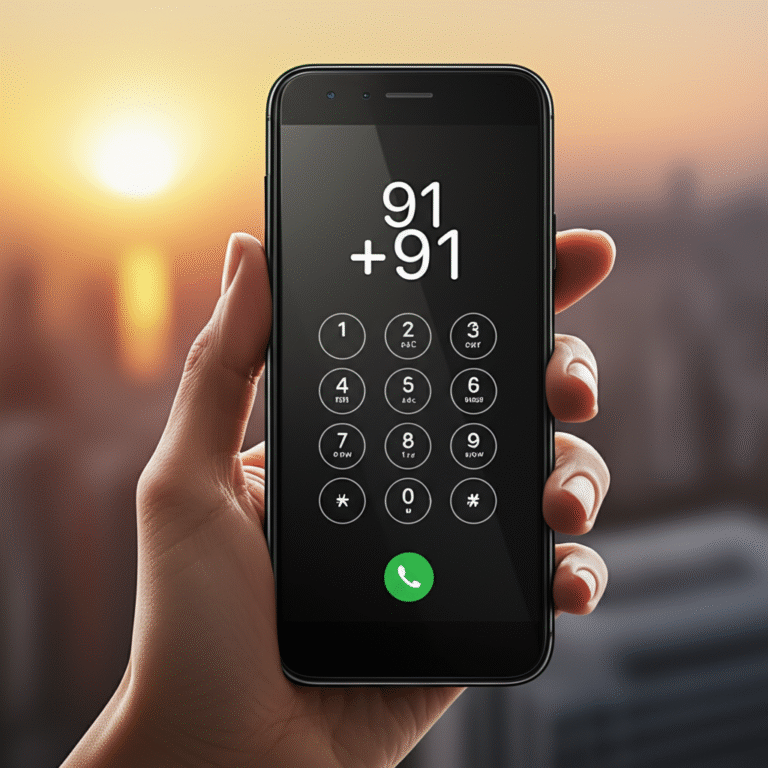How Do You Respond to Condolences
When someone offers sympathy after a loss, knowing how do you respond to condolences gracefully is key to acknowledging their kindness while honoring your grief. A simple, sincere thank you is usually best.
Key Takeaways
- Acknowledge sentiments with a simple ‘thank you.’
- Express gratitude for thoughts or presence.
- Share a brief, positive memory if comfortable.
- Keep responses concise and heartfelt.
- Personalize responses when possible.
- It’s okay to be brief; sincerity matters most.
Losing a loved one is a profoundly personal experience. During such a difficult time, receiving kind words and support from others can be a source of comfort. However, for many, figuring out how do you respond to condolences can feel overwhelming. You might wonder what to say, when to say it, or if a response is even expected. Navigating these social interactions while in mourning requires gentleness, both with yourself and with those offering sympathy. This guide will help you understand simple, sincere ways to acknowledge the support you receive, making this process a little easier.
Understanding the Purpose of Condolences
Condolences are expressions of sympathy meant to acknowledge your loss and offer comfort. They come in many forms: spoken words, written notes, cards, social media messages, or even just a supportive presence. The people offering them are not expecting a specific, elaborate reply. Their primary goal is to show they care and are thinking of you during a challenging period. They understand you are grieving and do not expect you to perform social niceties perfectly.
The Importance of Responding
While there’s no strict rulebook, responding to condolences shows gratitude for the kindness extended. It acknowledges their effort to connect with you and eases their concern that their message may have gone unnoticed. A simple acknowledgment can also help validate your own feelings by connecting you with a supportive network. In essence, it’s a way to say, “I heard you, and I appreciate your support,” even when words are difficult to find.
When and How to Respond
There is no single timeline for responding. Some people find they can respond within days, while others may take weeks or even months. The most important thing is to respond when you feel ready and able. Don’t feel pressured to respond immediately.
Responding in Person
If someone offers condolences face-to-face, a simple nod, a gentle smile, and a heartfelt “Thank you” is often sufficient. If you feel up to it, you can add a brief comment like:
- “Thank you for being here.”
- “I really appreciate you saying that.”
- “Thank you for your kind words.”
You can also briefly share a positive memory if it feels natural and comfortable. For example, “Thank you. He was a wonderful person, and I’ll miss his [specific trait].” However, if you are feeling overwhelmed, “Thank you” is perfectly adequate.
Responding to Cards and Letters
Responding to sympathy cards or letters can feel more formal. Many people choose to send thank-you notes. These can be handwritten, pre-printed cards with a personal message, or even emails.
Handwritten Thank-You Notes
A handwritten note is a classic and deeply personal way to respond. It shows a significant level of care and effort.
- Address the sender: Use their name.
- Express thanks: Start with “Thank you for…”
- Mention their specific message or action: “Thank you for your beautiful card,” or “Thank you for attending the service.”
- Share a brief memory (optional): “We will always remember [shared experience].”
- Reiterate your appreciation: “Your support means so much to us.”
- Sign off: “With heartfelt thanks,” or “Sincerely.”
Pre-Printed Thank-You Cards
These cards often have a pre-written message. You can add a short personal note at the bottom. This is a good option if writing extensively feels too difficult. Even a simple “Thank you for your kindness. We appreciate you.” can be very meaningful.
Email or Digital Messages
For messages received via email or social media, a direct reply is appropriate. Keep it concise and sincere. Acknowledge their message and express your thanks.
Responding to Social Media Condolences
Many platforms allow for public or private responses. For public comments, a general thank you post, or replying to individual comments with a brief “Thank you” or “Appreciate your kind words” is common. Be mindful of your privacy settings and what feels comfortable for you.
Pro Tip: Create a spreadsheet to track who sent condolences and how you responded. This helps ensure no one is unintentionally left out and can be useful for future correspondence, like sending thank you notes for funeral flowers or donations.
What to Say (Examples)
It’s normal to struggle with words. Here are some simple, effective phrases:
Short and Sweet:
- “Thank you.”
- “Thank you for your kindness.”
- “I appreciate your support.”
- “Thank you for thinking of us.”
- “Your words mean a lot.”
Slightly More Detailed:
- “Thank you for your beautiful message. It means so much.”
- “We appreciate you reaching out during this difficult time.”
- “Thank you for sharing your memories of [Deceased’s Name]. We loved hearing them.”
- “Thank you for attending the service. Your presence was a comfort.”
When a Specific Memory is Shared:
- “Thank you. I remember that [memory] well.”
- “That’s a lovely memory of [Deceased’s Name]. Thank you for sharing.”
What to Avoid
While people are generally understanding, certain responses can sometimes cause unintended discomfort:
- Minimizing the loss: Avoid phrases like “At least they lived a long life” or “You’ll get over it.”
- Making it about you: Refrain from sharing your own unrelated grief experiences unless directly asked or it feels genuinely supportive.
- Offering unsolicited advice: Unless someone asks for advice on specific matters, it’s best to avoid suggesting how they should grieve.
- Demanding specific responses: Don’t expect elaborate thank-yous. A simple acknowledgment is enough.
Responding to Different Types of Support
The way you respond might vary slightly depending on the gesture.
Funeral or Memorial Services
At the service itself, thank people as they approach you. Brief, sincere acknowledgments are best. You are in a vulnerable state, and people understand that. Many families designate a person to receive cards and oversee thank-you notes later.
Flowers
If you receive flowers, a simple thank you to the sender is appropriate. You don’t need to send a separate thank you card specifically for flowers unless it was a very significant arrangement and you want to express extra gratitude.
Donations
If donations are made in lieu of flowers, the funeral home or a designated family member will typically notify the deceased’s next of kin about who made the donations. You may choose to send a thank-you note to the donors, acknowledging their contribution.
Food/Meal Deliveries
A verbal thank you when the food arrives or a general thank you note later is usually sufficient. These gestures are often anonymous or from close friends who understand you might not be able to respond extensively.
Table: Responding to Condolences – Quick Guide
Here’s a quick reference for different scenarios:
| Type of Condolence | How to Respond | Example Response |
|---|---|---|
| In Person | Verbal acknowledgement, gentle smile, eye contact (if comfortable) | “Thank you. I appreciate you being here.” |
| Sympathy Card/Letter | Handwritten note or pre-printed card with a personal message, email | “Thank you for your kind words. They mean a lot during this time.” |
| Social Media Message | Direct reply to the comment or post | “Thank you for your support.” |
| Funeral Flowers | Verbal thanks to giver, or acknowledged in general thank you letters | “Thank you for the beautiful flowers.” |
| Donations (In lieu of flowers) | Thank you note to donor, often sent later | “Thank you for your thoughtful donation in memory of [Deceased’s Name].” |
Navigating Grief and Social Expectations
It’s crucial to remember that your priority is your grief. You are not obligated to perform social duties perfectly. People who offer condolences understand this. Their support is about offering comfort, not adding to your burden.
Self-Care is Key
When responding, listen to your energy levels. If writing a long letter feels too much, a short, heartfelt message is better. If you can only manage a spoken “Thank you,” that is enough. Prioritize your well-being. Resources like GriefShare offer support and guidance for those navigating loss.
When to Seek Professional Help
If the grief feels unbearable or you’re struggling to function, seeking professional support from a therapist or grief counselor is a sign of strength. Organizations like the Hospice Foundation of America provide valuable resources and support networks.
FAQ: How Do You Respond to Condolences?
Q1: Do I have to respond to every single condolence message?
A1: It is considered good practice to acknowledge messages of condolence, but you are not obligated to respond to every single one. Prioritize messages from those closest to you or those who made a significant gesture. For very large numbers of social media comments, a general thank you post might suffice.
Q2: How long do I have to respond to condolences?
A2: There is no set deadline. Many people respond within a few weeks to a few months after the loss, once they feel ready. The most important aspect is sincerity, not speed.
Q3: Is it okay to just say “Thank you”?
A3: Absolutely! “Thank you” is a perfectly acceptable and sincere response. It conveys your gratitude without requiring you to expend excessive emotional energy.
Q4: What if I receive condolences online? How should I respond?
A4: You can respond directly to the comment or message. A simple “Thank you for your kind words” or “We appreciate your support” is appropriate. If there are many comments, a general thank you post to everyone can be a good option.
Q5: Should I send thank you notes for funeral flowers?
A5: It is a kind gesture to acknowledge funeral flowers. Some families choose to send thank-you notes to the givers, while others might include a general thank you in a later announcement or service. A verbal thank you when receiving them is also polite.
Q6: What if I can’t find the right words?
A6: It’s very common to struggle with words during grief. Focus on sincerity. Phrases like “Thank you for your kindness” or “I appreciate you thinking of us” are always appropriate. You don’t need to be eloquent; being genuine is what matters most.
Q7: Can I ask for help responding to condolences?
A7: Yes, absolutely. If you have a trusted friend or family member who is not also experiencing intense grief, you can ask them to help you draft thank you notes or manage responses. It’s important to lean on your support system.
Conclusion
Responding to condolences is a delicate act of balancing your grief with gratitude for support. Remember that sincerity and acknowledgement are more important than perfectly crafted words. Whether in person, through a card, or online, a simple and heartfelt “thank you” can convey your appreciation effectively. Be gentle with yourself during this time; tend to your emotional needs first, and respond to messages of sympathy when you feel ready. The support you receive is a testament to the connections you and your loved one have built, and acknowledging it is a quiet, meaningful step in your healing journey.


